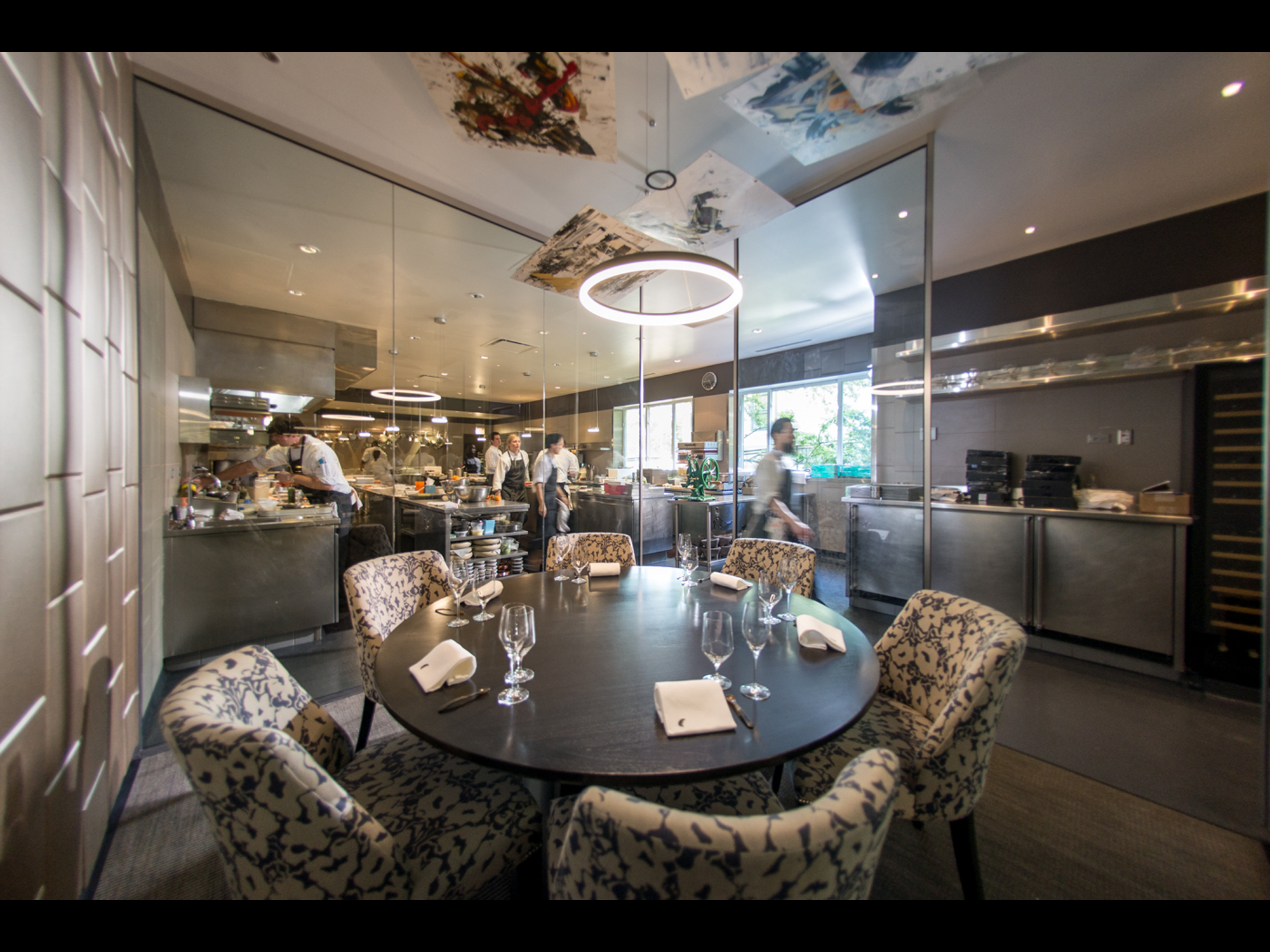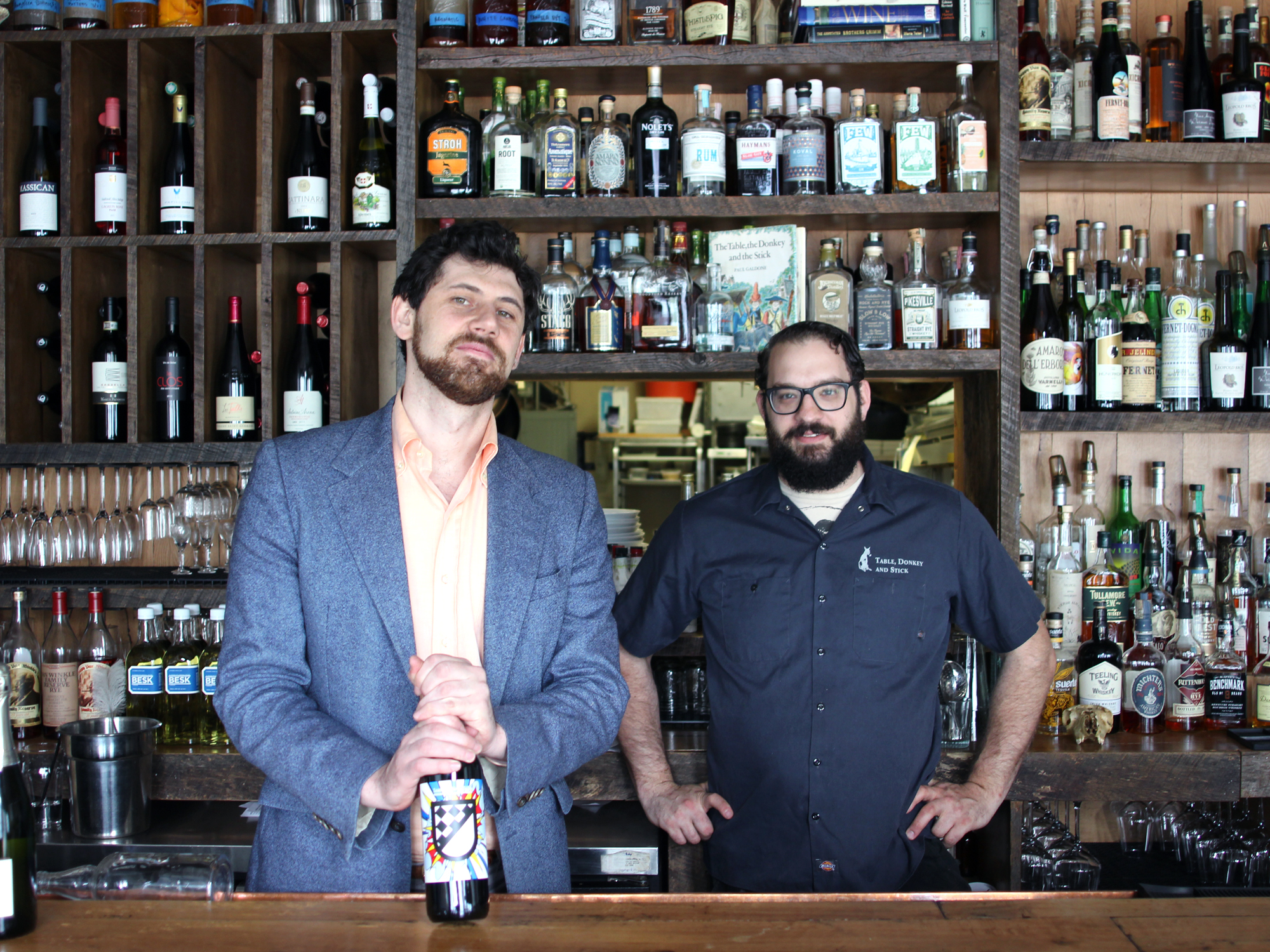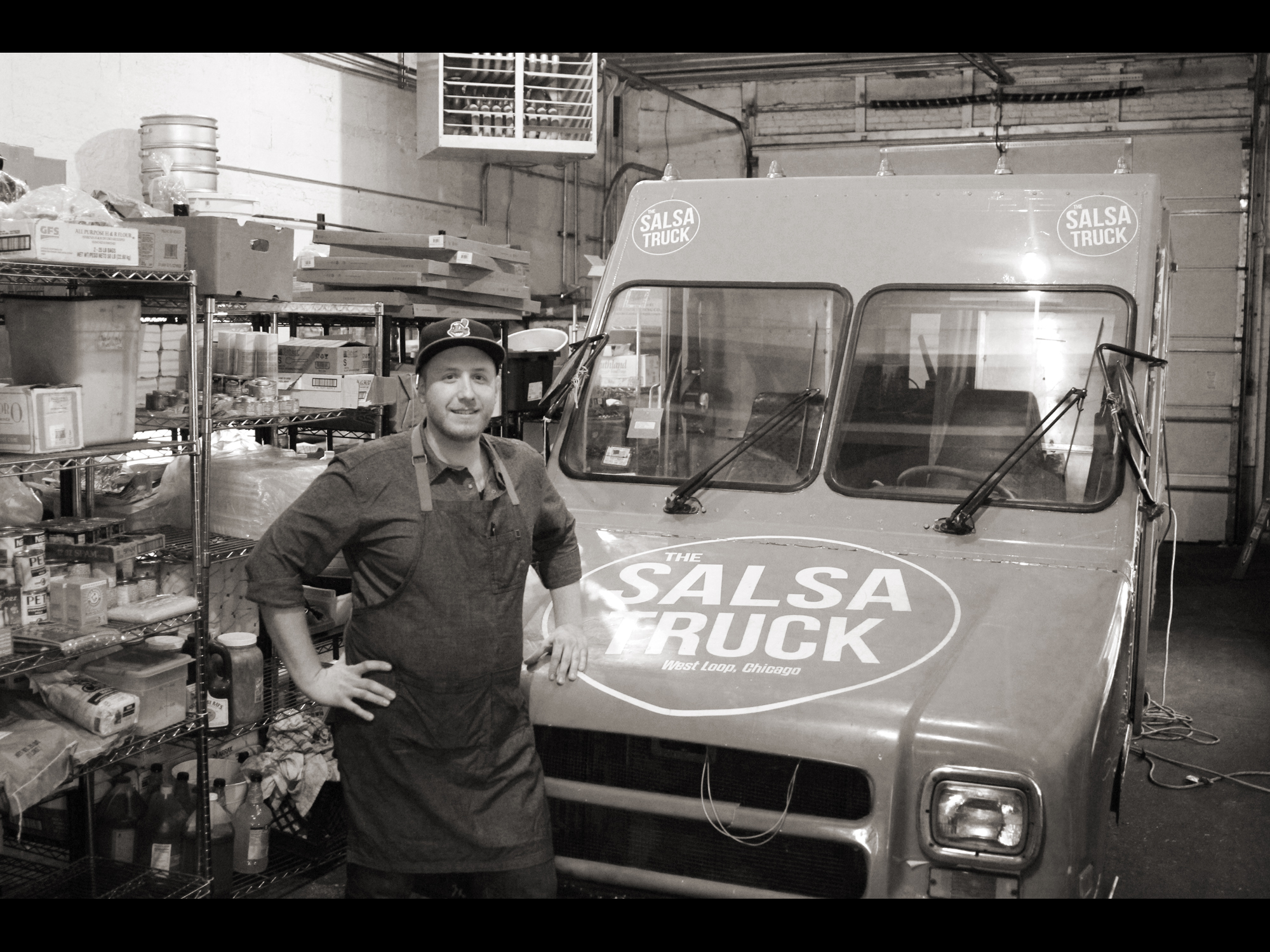WHAT’S A FAMOUS RESTAURANT ON THE NORTHWEST SIDE? I ask Quay Tao, owner of Community Tavern, on Milwaukee just north of Irving Park, a little up the street from the Six Corners Sears store, down the street from the intermittently active Portage Theater and the Halloween-jammed Fantasy Costumes.
“There isn’t one!” he laughs. “I hope someday we’ll be the one, but when we opened The Portage, people said, you’re crazy, why would you want to open in Portage Park? Certainly six years ago, Portage Park wasn’t known for anything—except maybe banquet halls and pizza places.”
Good-looking and blessed with the easy familiarity of a natural-born front of house guy, Tao opened The Portage here in 2010 because it was his neighborhood, and he wanted to eat out with his family, and his choices were few—a couple of Polish places, or Italian-American if he went up to Norwood Park at the city’s northwest edge. There’s arguably only one place on the entire far northwest side that truly has citywide name recognition—Superdawg.
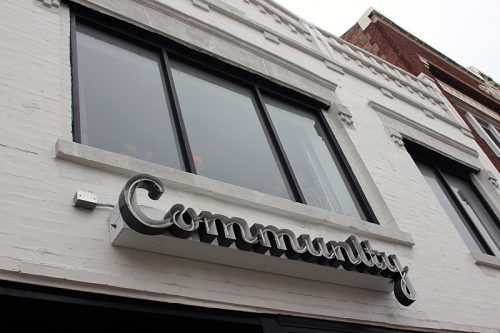
He thinks Portage Park could be… well, maybe it’s too much to think it will ever be as hot as Logan Square. But it wasn’t that long ago that the idea of Logan Square being a more desirable restaurant location than the Gold Coast seemed pretty ridiculous, too. Demographically it seems promising—its median household income today (around $50,000) is about the same as Logan Square’s was when, say, Longman & Eagle opened a few years ago.
But just because people have money to eat out, doesn’t mean they will. You move to the northwest side to keep the kids off your lawn, not to drink hip cocktails with them. At least that’s what everyone assumes.
“That’s changing,” he says. “This is anecdotal, but I believe that just from seeing young families coming in here and saying, Yeah, we moved in a year ago, we moved in six months ago. There was an older demographic, and they phase out one way or the other. I think this neighborhood attracts young families, because it’s still really affordable.”
That’s his hope, anyway—that a new Portage Park community will ultimately wind up here from all over the city, looking for a place to eat like what they’ve known elsewhere. Because that’s exactly what he did.
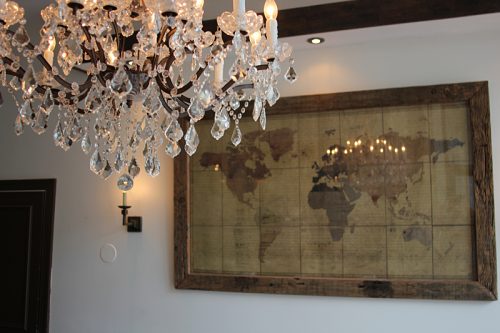
Community Tavern, designed by Tao
QUAY TAO WAS BORN IN VIETNAM, AND HIS family emigrated to Chicago in 1980, landing in the neighborhood where all the Vietnamese immigrants landed. “Uptown in the 80s, if you can imagine, was a little bit rough,” he says with diplomatic understatement, “but coming from another country you didn’t know any better. It was a typical city upbringing, nine of us in a three-bedroom apartment. I went to public school, in what you would consider a…”—he searches for a sufficiently neutral euphemism—”low-performing school. Whatever the term they use today. But it was a bad school. I didn’t know, I was just figuring out American life, and English.”
But at that school he caught a break. “I had a really good teacher in 8th grade, who kind of guided me to Lincoln Park High School, what they call selective enrollment now, but Honors, basically. I graduated from there and went to U of I for college.”
You might expect that there was a family Vietnamese restaurant along the way, Uptown being full of such places in the 80s, but Tao had no restaurant experience growing up—just thinking “My mom is a pretty darn good cook,” and hanging around her as the tenth of ten family members. “There was always food, because kids are always hungry. That was probably my first exposure to food, and knowing what tastes good.”
Instead, he got his first exposure to the industry waiting tables in college at a pizzeria, and quickly discovered that “I’m pretty decent at this. Talking to people, explaining food. It was nothing fancy, pizza and salads, but it was the art of entertaining, of showmanship.” Still, a dutiful Asian son, he graduated with a finance degree and took a job in Chicago. But he wasn’t satisfied with it.
To do a million-dollar buildout in 1998, looking back, that was a crazy risk. You only do that when you’re young and kind of dumb.
“I was at a little bit of a loss, trying to figure out what you do if you don’t like what you thought you were going to be doing,” he says. He quit his job and went back to waiting tables, and in 1994 he wound up at an upscale, Vietnamese-French restaurant that had just opened in the Gold Coast, Le Colonial. “I know this food, this is what I grew up with,” he remembers thinking.
He was promoted into management, and met another manager, Steven Ford. In time they decided to take the plunge on their own place, and in 1998 they partnered with Terry Alexander (Mia Francesca, One Off Hospitality) to open Tizi Melloul, a hip Mediterranean restaurant in River North which ran for over a decade in the space that’s now GT Fish & Oyster. “When we started Tizi Melloul, I was 26 years old and we didn’t have a lot of money, but I had a lot of ambition,” he says. “To do a million-dollar buildout in 1998, looking back, that was a crazy risk. You only do that when you’re young and kind of dumb.”
Ultrachic yet approachable, Tizi Melloul was successful, and it was followed by the downright Austin Powers-ish MOD, designed by Suhail, in a Wicker Park space where Alexander would later open a little place you may have heard of—The Violet Hour. (They also opened Acqualina in North Center, which didn’t do as well.) By this point Tao’s group was known for outlandishly atmospheric interior design, and he says “That was always something I was drawn to, that I’ve always enjoyed, the design aspect of the restaurant.”

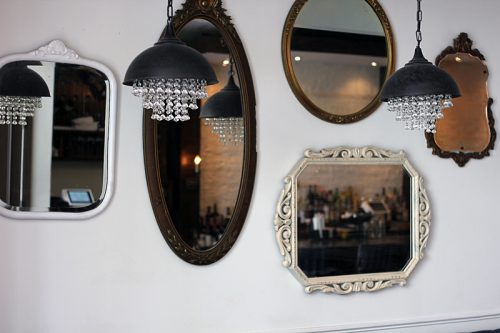
After a decade, though, Tao and Ford were both a bit burnt out; Ford went his own way to open Pork Shoppe in Avondale, while Tao went his to take some time off. “Long hours, many years, young children, lack of sleep,” Tao sums up his feelings at that point. “You kind of lose that fire after a while.” He explored the possibility of teaching—“That was a lot harder than I thought”—but after about a year and a half decided, “Let’s go back to what I do well, what I enjoy, but do it in a way that fits with my philosophy for a while—smaller, more neighborhood.”
And so in 2010 he opened a restaurant in the neighborhood to which he had moved, doing comfort food with the occasional Asian tinge, and giving it the neighborhood’s name—The Portage, located just south of Irving Park on Central. “We opened The Portage with the idea of doing something that was chef-driven, a downtown kind of vibe—but neighborhood. Something that’s value driven, but great food, great service, and beautiful ambience.”
Tao looks a little wistful. “That will always be my baby, because it was something where I took the vision, and put the team together. It was really fulfilling. The neighborhood really embraced it—well, some people are always going to believe you should never pay more than $12 for an entree, and you’re never going to convince them. But for the most part, we were on the cusp of the changes that are coming for Portage Park. It gave some pride to the neighborhood, where Portage Park has always kind of had this inferiority complex. I speak of it kind of emotionally, like your firstborn.”
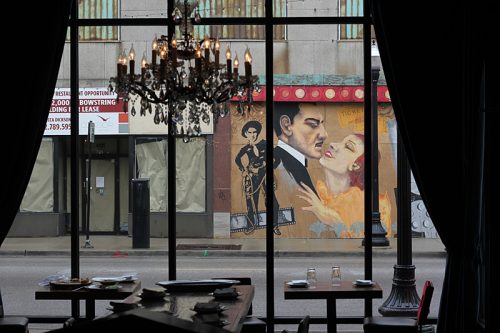
YOU’LL NOTICE HE’S REFERRING TO IT in the past tense—The Portage closed at the end of 2015. He discovered something else about helping a neighborhood evolve as a dining neighborhood—your first concept is doing fine, then you introduce your second concept… and suddenly your first concept isn’t the hippest thing in the neighborhood any more.
“I’d always had this idea of doing a boutique steak house,” Tao says. “But I had that reservation of, is the northwest side ready for that?” Considering that we’re almost directly opposite the spot on Milwaukee Avenue that was once home to Mr. Steer, setting a standard for steak in the mid-single digits, I can see his hesitation. But in this case, the community literally asked for it—then-newly elected Alderman John Arena told him, “If you’re ever thinking about doing something, we’d love for you to think about Milwaukee Avenue.”
That stretch of Milwaukee looks a bit like a rust belt town’s boarded-up Main Street, but with a theater and good retail building stock, it has obvious revitalization potential as a future retail and nightlife strip—obvious enough that developers have snapped up the buildings, anyway. Community’s space had been an empty, foreclosed property for decades, so he estimates it took 18 months with the city to get to the opening in February 2015, and along the way, his concept for the space went through a change that the name doesn’t really reflect.
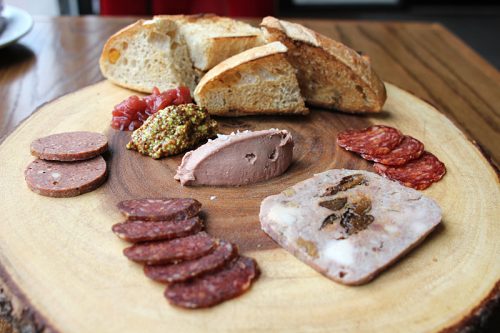
Housemade bread and charcuterie: clockwise from top, chicken liver pâté; Andalusian dry-cured chorizo; rabbit terrine with toasted walnuts, prunes and tarragon; harissa-spiced lamb salami; summer sausage, with guajillo chile and cherry lambic
“People get confused by the name because the original concept for the space was going to be more of a tavern,” Tao says. “A local gathering space. But as I said earlier, I designed all my places. So taking over the design, one thing led to another, and the design got to where, this is not really so much of a bar any more. It’s kind of looking more like a downtown restaurant vibe.”
As the look changed, so did the food, from the bar food he initially envisioned. Joey Beato was The Portage’s chef—a veteran of Shawn McClain’s restaurants Spring and Green Zebra and of Momofuku in New York. Like Tao, he moved to the neighborhood for its relaxed pace and then starting look for somewhere to work in it. He applied for a sous chef job at The Portage, only to become head chef almost immediately. “That type of restaurant, what it looked like—that was what I wanted. The independent, more homey restaurant really appealed to me. And me and Quay got along from the beginning—which, you know, generally it’s hard to get along with owners.”
As Community evolved from a tavern, Beato had to devise the menu for a full-fledged steak house—though for a steak house, it’s fairly light on steaks, with just four on the menu (though pretty much covering the bases, from a simple steak frites to a rib eye, dry aged in house). The rest of the menu ranges from fish to pasta, with a few luxe touches like a seafood tower. “The food just got more elevated,” Beato says, as the concept evolved to more of a steak house. “But you have to be careful in this neighborhood, you can’t have a $68 ribeye, a $40 filet, because you’ll just close.”
“Just having oysters is pretty far out for the northwest side,” Tao adds.
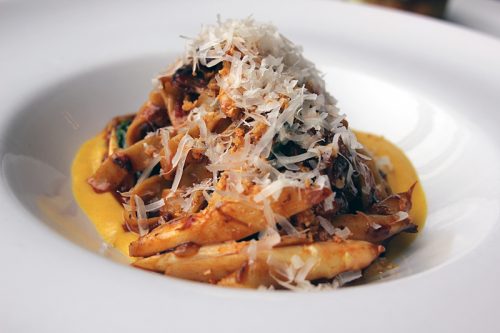
Fettucine with CDK Farms beef cheeks, grana padano, butternut squash, brown butter, fried garlic
Beato buys almost all of his beef from CDK Farms, about two hours west of Chicago, but to keep costs down for the neighborhood, he buys less conventional cuts—”We don’t even have a filet on the menu right now, it’s a top sirloin filet, we call it.” Another focus is charcuterie, made in house by chef de cuisine Matt Saccaro. “We have a large charcuterie [plate] that we serve five different meats on, but then throughout the menu we have little charcuterie plates, and at the bar he’s always putting on whatever he’s been working on.”
That sort of thing would be typical in other parts of the city, but I have to wonder—do Portage Parkers care if they know the name of their cattle rancher? Has that kind of foodie attitude traveled out this far yet? “The majority of people, they’re not really paying attention, I don’t think,” Beato says. “I think it’s more like, they get the steak, oh this is awesome—then they’ll start asking questions. Hopefully then they learn more, because our servers talk a lot about the ranch.”
COMMUNITY TAVERN TOOK OFF WELL FROM its opening at the beginning of 2015—the neighborhood, trusting Tao by now, embraced it quickly, and Chicago magazine gave it citywide notice by ranking it #7 in their Best New Restaurants issue last May. The only problem was one of success—Tao’s regular crowd liked his new place so much that they kind of dropped his old place like a rock.
“Once we opened Community here, we saw a lot of overlap in the customer base. We expected that there was going to be a certain drop in business, obviously, given that the two restaurants were fairly close together, and pricewise, were both a little on the higher scale of the neighborhood,” Tao says. “But we didn’t anticipate the drop to be as high as it was.”
“It wasn’t like they split it in half. It went 75-25,” Beato says. “If you’re in the neighborhood, you’re going to go to the one that’s new, and if you’re coming from outside the neighborhood, you’re going to go to the one that’s getting all the media attention.”
Community cannibalized so much of The Portage’s business that by year’s end, they decided to close it and reconcept the space as a “fast casual” Mexican-Korean taco restaurant called Cochinita Taco Co. Tao says, “Fast casual is really a trend that is so strong, we thought, let’s not fight this trend, let’s morph and see if we can do something that’s not going to compete with Community so much.” The Portage was dead, but long live filling in other gaps in the local restaurant market.
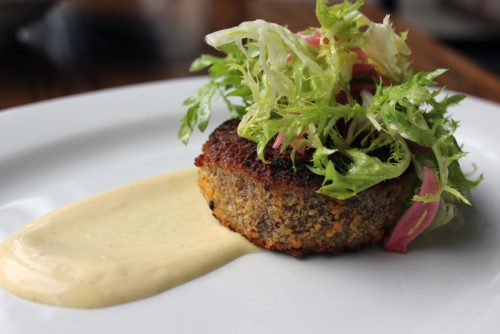
Crispy pig head torchon
“I think we’re still hamstrung a little bit by where we’re at, we can’t charge certain price points,” Tao says. “We have to be conscious that this is still a neighborhood, still ‘up-and-coming,’ you hear that term a lot. But for people that are in the know, they really appreciate the value that you get here. And for some that are not, who think that we’re crazy that we have a ribeye for $42, it sounds expensive but if you were downtown, that’s $65, $85.”
Even if Tao still has to position Community Tavern as a deal compared to downtown, he believes the northwest side is on the verge of the kind of shift that Lincoln Square went through, where it went from a sleepy older neighborhood to offering your choice of three-figure tasting menus, seemingly overnight.
“Growing up in Uptown in the 80s, we ventured into Lincoln Square, and I remember it being a good neighborhood, but never a bustling place where you would go for dinner,” he says. “We’re hoping that Portage Park becomes that next hub. It doesn’t happen overnight. Hopefully at some point there’s some critical mass, and it accelerates. We want some company in the area, to draw more people.”
Michael Gebert is certified prime as editor of Fooditor.
COVER IMAGE: Chef Joey Beato and owner Quay Tao.
Latest
Join the Discussion
After you comment, click Post. If you're not already logged in you will be asked to log in or register with Disqus.




